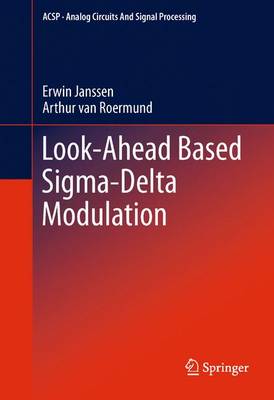Analog Circuits and Signal Processing
1 primary work • 6 total works
Book 92
Dynamic-Mismatch Mapping for Digitally-Assisted DACs
by Yongjian Tang, Hans Hegt, and Arthur van Roermund
Look-Ahead Based Sigma-Delta Modulation
by Erwin Janssen and Arthur van Roermund
Circuit Design on Plastic Foils
by Daniele Raiteri, Eugenio Cantatore, and Arthur van Roermund
This book illustrates a variety of circuit designs on plastic foils and provides all the information needed to undertake successful designs in large-area electronics. The authors demonstrate architectural, circuit, layout, and device solutions and explain the reasons and the creative process behind each. Readers will learn how to keep under control large-area technologies and achieve robust, reliable circuit designs that can face the challenges imposed by low-cost low-temperature high-throughput manufacturing.
Design of Organic Complementary Circuits and Systems on Foil
by Sahel Abdinia, Arthur van Roermund, and Eugenio Cantatore
Smart Ad and Da Conversion
by Pieter Harpe, Hans Hegt, and Arthur van Roermund
RF-Frontend Design for Process-Variation-Tolerant Receivers
by Pooyan Sakian, Reza Mahmoudi, and Arthur van Roermund
This book discusses a number of challenges faced by designers of wireless receivers, given complications caused by the shrinking of electronic and mobile devices circuitry into ever-smaller sizes and the resulting complications on the manufacturability, production yield, and the end price of the products. The authors describe the impact of process technology on the performance of the end product and equip RF designers with countermeasures to cope with such problems. The mechanisms by which these problems arise are analyzed in detail and novel solutions are provided, including design guidelines for receivers with robustness to process variations and details of circuit blocks that obtain the required performance level.
- Describes RF receiver frontends and their building blocks from a system- and circuit-level perspective;
- Provides system-level analysis of a generic RF receiver frontend with robustness to process variations;
- Includes details of CMOS circuit design at 60GHz and reconfigurable circuits at 60GHz;
- Covers millimeter-wave circuit design with robustness to process variations.





